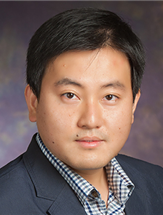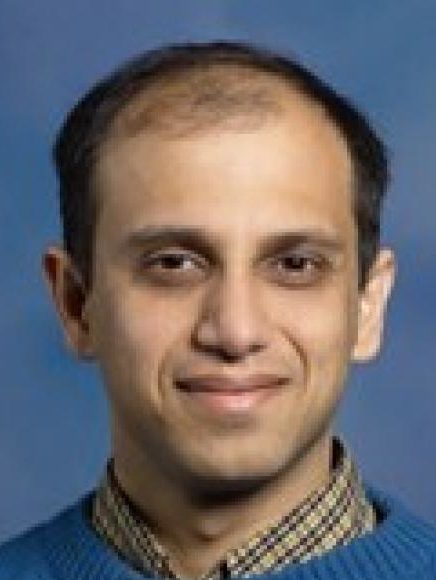SPECIFIC AIMS:
The overall goal of this study is to develop and optimize an AI-assisted ultrasonic fresh produce sanitation system to significantly improve the efficacy of current fresh produce sanitation operations. The specific objectives in year 1 of the project include:
a) Develop a sub-pilot scale continuous-flow ultrasonic fresh produce washing testbed
b) Quantify cavitation activity on produce surfaces using high-speed imagining and X-ray techniques,
c) Develop electrical sensors measuring chlorine concentration and pH level based on graphene field-effect transistor (FET) sensors, and
d) Perform machine learning (ML)-based response surface modeling of fresh produce washing process.

BACKGROUND:
Food safety is a national priority. Foodborne illness is a costly, sometimes life-threatening public health problem. The Centers for Disease Control and Prevention (CDC) estimates that Americans experience about 48,000,000 cases of foodborne illness annually, affecting one out of six individuals, leading to an estimated 128,000 hospitalizations and 3,000 deaths. Foodborne illnesses annually cost the American economy more than $77 billion. Fresh produce is a main contributor to the foodborne outbreaks. Current sanitation practice in the fresh produce industry utilizes cold water with chlorine or other sanitizers, which is often the single and the most critical step to remove or reduce pathogens on fresh produce. However, due to the large organic loads in wash water, chlorine alone is often ineffective to inactivate bacterial pathogens, such as E. coli O157:H7. PI Feng’s lab has recently developed a pilot-scale, continuous-flow power ultrasound system for fresh produce washing, the first of its kind in North America. The system was successfully tested for reducing E. coli O157:H7 during spinach and lettuce washing. In a typical fresh produce washing process, washing water is reused. Due to the fast degradation of sanitizer during washing, periodical replenish of sanitizer and addition of fresh water are required. Currently, there is a significant knowledge gap on when and how to refill sanitizer and fresh water, which has introduced another layer of uncertainty or insecurity in fresh produce sanitation process. This proposal is a cross institution and cluster collaboration that leverages developments in cleaning, measurement and AI technologies, and is strongly aligned with mission statement of the Next Generation Food Systems Institute.
SIGNIFICANCE AND IMPACT:
The proposed study will tap into the power of AI to develop strategies to optimize an ultrasonic fresh produce
sanitation process. It will for the first time enable an intelligent produce washing process to ensure maximized
sanitation efficacy for different produce types.
APPROACH WITH SUCCESS METRICS:
Task 1: Development of sub-pilot scale continuous-flow ultrasonic fresh produce washing testbed for data generation (Feng, UIUC)
Since a significant amount of data will be needed for AI and ML purposes, and since produce washing with the pilot scale produce washer requires large amount of water and produce, we will design and fabricate a sub- pilot scale produce washer with ultrasound capacity for data generation and sensor evaluation purposes in year 1 of the project. This testbed is critical for the success of the proposed work. This produce washing testbed will be built with transparent material so the flow pattern, mixing of the produce during washing will be visualized. Sensors developed in Task 3 will be installed in the testbed to collect data about changes in sanitizer concentration in different location of the washer as a function of produce type, sanitizer to produce ratio, washing time, ultrasound power density, and cavitation activity (determined in Task 2). The data generated will be utilized in Task 4 for ML.
Task 2. Determination of cavitation activity on produce surface (Mäkiharju, UC Berkeley)
The laboratory experiments start by replacing the lettuce by an artificial plant leaf surface developed in Feng lab that mimics the surface topology, hydrophobicity, and surface chemistry of real lettuce leaf, but allowing for repeatable well-controlled studies. Cavitation on the surfaces will be characterized by readily available high-speed imaging up to 820,000 fps. Time-averaged cavitation within complex media (including real produce) can be quantified via X-ray techniques.
Task 3. Determination of graphene field-effect transistor (FET) chlorine concentration sensors (Nam, UIUC)
First, phenyl-capped aniline tetramer (PCAT) film will be deposited on graphene FET surface to enable specificity toward chlorine. Oxidation of PCAT by chlorine induces p-doing of graphene FET and subsequently allows real time electrical detection of chlorine level. Furthermore, the p-doped PCAT-graphene can be electrochemically un-doped by polarizing it cathodically to allow re-use of our sensors. Our chlorine sensor will be simpler in construction while allowing higher sensitivity compared to conventional electrochemical sensors.
Task 4. Development of develop an ML-based response surface model (Shao, UIUC)
We will develop an ML-based response surface model for leafy vegetable washing processes. The model is generally represented as q(u, v) = f(u) + g(v), where q is the vector of process outputs (e.g., quality, safety, cost); u is the vector of operating parameters (e.g., flow rate, ultrasound frequency, level of chlorine, key features of raw materials); v is the vector of monitoring features extracted from online sensing signals; and f(∙) and g(∙) are functions of u and v, respectively. This model structure is based on the hypothesis that in a washing process, the variabilities in process outputs can be decomposed into systematic and random variabilities, which are caused by operating parameters and uncontrollable conditions, respectively.
Project Team
Collaboration
The projects are jointly conducted with partners through the AIFS Network:
https://aifs.ucdavis.edu/




